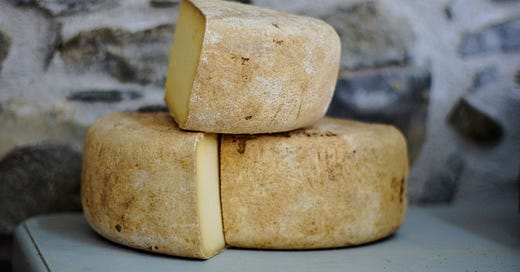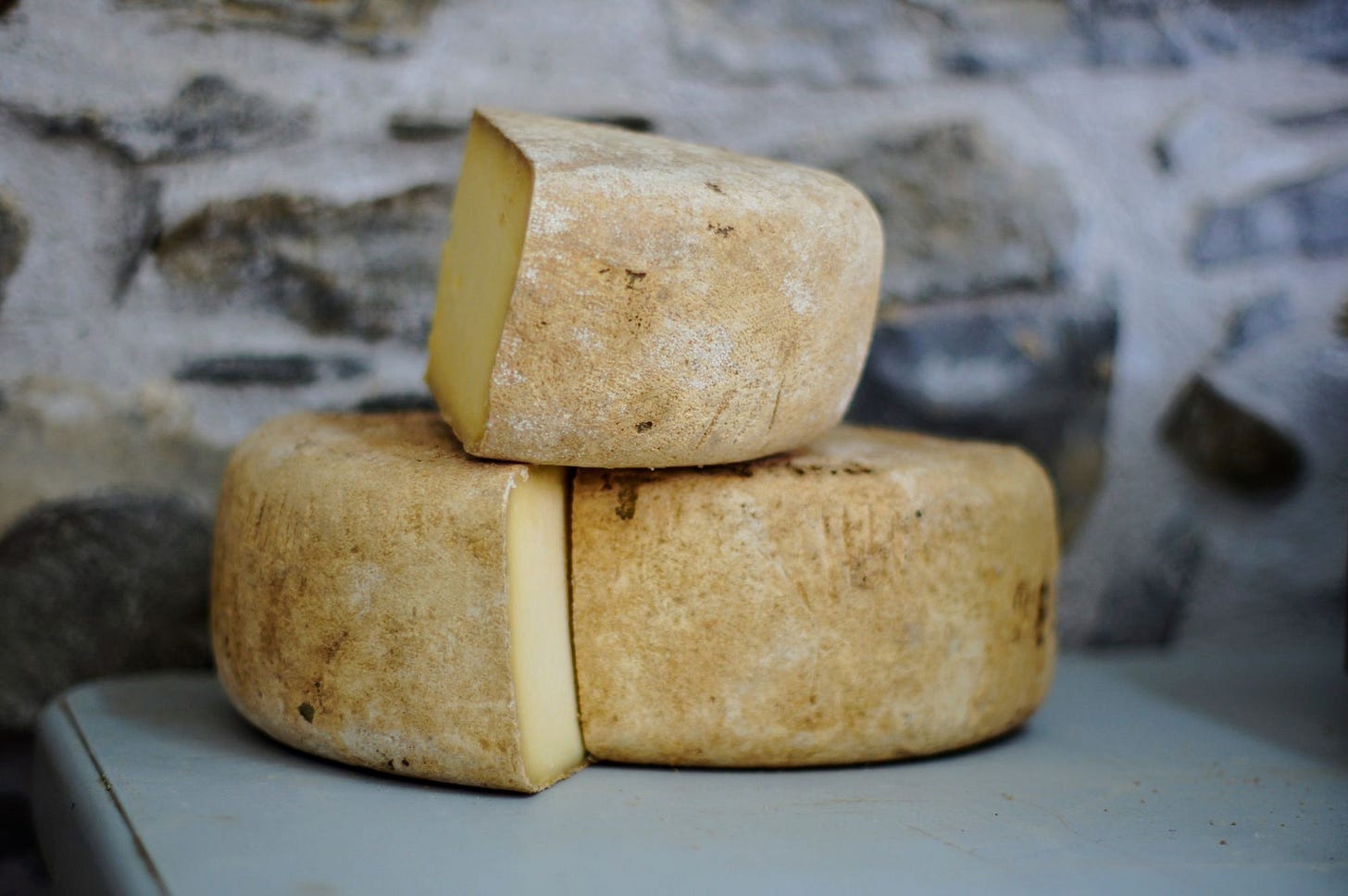I spent some time this week working on a short story featuring androids made out of fungus and trying to come up with variants of the old "is a hotdog a sandwich?" problem. In the process I wound up tracking down how to make cheese with varying levels of technology.
Fun Facts
The earliest records of cheese I'm aware of comes appears in a stamp in 3100 BCE…
Keep reading with a 7-day free trial
Subscribe to Manuscriptions to keep reading this post and get 7 days of free access to the full post archives.



